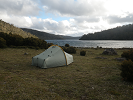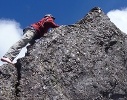who sels setopres bandages in hobart?
Forum rules
TIP: The online Bushwalk Inventory System can help bushwalkers with a variety of bushwalk planning tasks, including: Manage which items they take bushwalking so that they do not forget anything they might need, plan meals for their walks, and automatically compile food/fuel shopping lists (lists of consumables) required to make and cook the meals for each walk. It is particularly useful for planning for groups who share food or other items, but is also useful for individual walkers.
TIP: The online Bushwalk Inventory System can help bushwalkers with a variety of bushwalk planning tasks, including: Manage which items they take bushwalking so that they do not forget anything they might need, plan meals for their walks, and automatically compile food/fuel shopping lists (lists of consumables) required to make and cook the meals for each walk. It is particularly useful for planning for groups who share food or other items, but is also useful for individual walkers.
23 posts
• Page 1 of 1
who sels setopres bandages in hobart?
the two chemists i went to had no idea what i was asking for... maybe i should have stocked up on happy pills in case of snake bite instead....
from the land of the long white clouds...
-

wayno - Lagarostrobos franklinii

- Posts: 8685
- Joined: Sun 19 Jun, 2011 7:26 am
- Location: NZ
- Region: New Zealand
- Gender: Male
Re: who sels setopres bandages in hobart?
Sorry to go off topic, however, I asked about these on a recent first aid course (St John) only to be told not to waste my money when a standard compression bandage used properly will achieve the same thing.
P.S. You sound really paranoid about snakes!
P.S. You sound really paranoid about snakes!
-

Strider - Lagarostrobos franklinii

- Posts: 5875
- Joined: Mon 07 Nov, 2011 6:55 pm
- Location: Point Cook
- Region: Victoria
- Gender: Male
Re: who sels setopres bandages in hobart?
Try asking for high compression bandages. I've only bought them once and my local chemist in Lindisfarne has them.
The idea of wilderness needs no defense, it only needs defenders ~ Edward Abbey
-

stepbystep - Lagarostrobos franklinii

- Posts: 7625
- Joined: Tue 19 May, 2009 10:19 am
- Location: Street urchin
- Region: Tasmania
- Gender: Male
Re: who sels setopres bandages in hobart?
cheers. my water bladder has split. so more shopping to do as well...
from the land of the long white clouds...
-

wayno - Lagarostrobos franklinii

- Posts: 8685
- Joined: Sun 19 Jun, 2011 7:26 am
- Location: NZ
- Region: New Zealand
- Gender: Male
Re: who sels setopres bandages in hobart?
As mentioned don't worry about being brand specific.
Anyway here's some light reading on the subject
http://www.dailytelegraph.com.au/news/p ... 6272758343
Anyway here's some light reading on the subject
http://www.dailytelegraph.com.au/news/p ... 6272758343
Do you want to build a snowman?
-

doogs - Lagarostrobos franklinii

- Posts: 3649
- Joined: Mon 11 Oct, 2010 4:32 pm
- Region: Tasmania
- Gender: Male
Re: who sels setopres bandages in hobart?
This article may be useful to you. Also includes names of 2 online sites where you can buy the setopres.
http://bsar.org/setopress
http://bsar.org/setopress
-

philm - Athrotaxis cupressoides

- Posts: 467
- Joined: Sat 06 Nov, 2010 10:49 am
- Region: South Australia
- Gender: Male
Re: who sels setopres bandages in hobart?
thanks, i'm touring in tas at the mo. so will need a shop... will get a compression if i dont see setopress
from the land of the long white clouds...
-

wayno - Lagarostrobos franklinii

- Posts: 8685
- Joined: Sun 19 Jun, 2011 7:26 am
- Location: NZ
- Region: New Zealand
- Gender: Male
Re: who sels setopres bandages in hobart?
wayno wrote:thanks, i'm touring in tas at the mo. so will need a shop... will get a compression if i dont see setopress
You might as well hook up with St Johns and get a demo. The reason Setopress is better is that it is easier to get the compression right.
Michael
-

photohiker - Lagarostrobos franklinii

- Posts: 3097
- Joined: Sun 17 May, 2009 12:31 pm
- Location: Adelaide, dreaming up where to go next.
Re: who sels setopres bandages in hobart?
dot know about the st johns, i'll be walking at the front, if i get bitten the girlfriend might just write me off as a loss
from the land of the long white clouds...
-

wayno - Lagarostrobos franklinii

- Posts: 8685
- Joined: Sun 19 Jun, 2011 7:26 am
- Location: NZ
- Region: New Zealand
- Gender: Male
Re: who sels setopres bandages in hobart?
I wouldn't worry about using 'high-compression' bandages. The compression that you need to limit movement of subcutaneous lymphatic fluid is not high, easily achieved by something like this:
http://www.chemistaustralia.com.au/prod ... -1-5m.html
a standard crepe bandage is still recommended by most first aid providers, although it takes practice to get the pressure even and firm. Elastic bandages are recommended by resus.org:
http://www.resus.org.au/policy/guidelin ... -aug11.pdf
although, other agencies don't specify a preference:
http://www.avru.org/files/imported/firs ... et_pib.pdf
http://www.health.qld.gov.au/poisonsinf ... essure.asp (recommends crepe bandages)
More pressure (above lymphatic pressure) won't be any better, you'll just restrict venous return, which won't do any harm per se - just completely irrelevant to the problem at hand. The main danger of using too much pressure by overzealously applying a highly compressive or elastic bandage is that if you close down venous return completely it may become quite painful (often intolerably so). The downside to this is that you'll need to remove the bandage...releasing the venom you've just slowed down.
I would chuck in a couple of triangular bandages for a splint, as muscular movement is also a very big factor with snake bite.
As with anything, prevention is the best cure so gaiters or long pants should be on your list...
http://www.chemistaustralia.com.au/prod ... -1-5m.html
a standard crepe bandage is still recommended by most first aid providers, although it takes practice to get the pressure even and firm. Elastic bandages are recommended by resus.org:
http://www.resus.org.au/policy/guidelin ... -aug11.pdf
although, other agencies don't specify a preference:
http://www.avru.org/files/imported/firs ... et_pib.pdf
http://www.health.qld.gov.au/poisonsinf ... essure.asp (recommends crepe bandages)
More pressure (above lymphatic pressure) won't be any better, you'll just restrict venous return, which won't do any harm per se - just completely irrelevant to the problem at hand. The main danger of using too much pressure by overzealously applying a highly compressive or elastic bandage is that if you close down venous return completely it may become quite painful (often intolerably so). The downside to this is that you'll need to remove the bandage...releasing the venom you've just slowed down.
I would chuck in a couple of triangular bandages for a splint, as muscular movement is also a very big factor with snake bite.
As with anything, prevention is the best cure so gaiters or long pants should be on your list...
- slparker
- Athrotaxis selaginoides

- Posts: 1407
- Joined: Fri 25 Apr, 2008 10:59 pm
Re: who sels setopres bandages in hobart?
Thanks for modifying your post slparker, that is much better.
The advantage of the setopress remains. Unless you regularly use compression bandages, how do you judge the correct pressure to restrict lymphatic flow? There is a trial mentioned here somewhere probably in the snake bite thread that showed even qualified health professionals had trouble getting it right. Mere mortals need all the help they can get.
The advantage of the setopress remains. Unless you regularly use compression bandages, how do you judge the correct pressure to restrict lymphatic flow? There is a trial mentioned here somewhere probably in the snake bite thread that showed even qualified health professionals had trouble getting it right. Mere mortals need all the help they can get.
Michael
-

photohiker - Lagarostrobos franklinii

- Posts: 3097
- Joined: Sun 17 May, 2009 12:31 pm
- Location: Adelaide, dreaming up where to go next.
Re: who sels setopres bandages in hobart?
We have them at our local ambulance station as a teaching aid. They certainly help you get the feel for the correct pressure. They're not authorized for use on patients by Ambulance Tasmnaia though. Too expensive I'm guessing.
Phil
-

Miyata610 - Phyllocladus aspleniifolius

- Posts: 503
- Joined: Sat 10 Dec, 2011 3:39 pm
- Location: One hour from the arm river track
- Region: Tasmania
- Gender: Male
Re: who sels setopres bandages in hobart?
I think the average person would be surprised /not think about how tight they should be applying a compression bandage for limb immobilisation?! You don't think about it when you're doing a first aid course, going through the motions & firmly applying it so as not cause discomfit to your mate 
- Jason68
- Atherosperma moschatum

- Posts: 74
- Joined: Mon 29 Aug, 2011 7:39 pm
- Region: Northern Territory
- Gender: Male
Re: who sels setopres bandages in hobart?
Welcome to Tassie, Bro
Finding a Setopress bandage in a hobart pharmacy would be a greater achievement than
finding the elusive fox. (hey, are there any fox threads on here?) Keep your eyes out Wayno. Their out there.
I got some online. www.homepharmacy.com for about $16.40 each plus a few dollars for postage. It took about a week.
St. Johns at Moonah usually stock them. I think for about $40 plus.
See how you get on. If no luck, I could sell you a couple of rolls.
Enjoy!
Finding a Setopress bandage in a hobart pharmacy would be a greater achievement than
finding the elusive fox. (hey, are there any fox threads on here?) Keep your eyes out Wayno. Their out there.
I got some online. www.homepharmacy.com for about $16.40 each plus a few dollars for postage. It took about a week.
St. Johns at Moonah usually stock them. I think for about $40 plus.
See how you get on. If no luck, I could sell you a couple of rolls.
Enjoy!
- sherpa
- Atherosperma moschatum

- Posts: 89
- Joined: Sun 15 Apr, 2012 4:05 pm
- Region: Tasmania
- Gender: Male
Re: who sels setopres bandages in hobart?
m girlfriend thinks she might want to spend the money on something else and just use me walking in front as bait to see where the biting snakes are...
from the land of the long white clouds...
-

wayno - Lagarostrobos franklinii

- Posts: 8685
- Joined: Sun 19 Jun, 2011 7:26 am
- Location: NZ
- Region: New Zealand
- Gender: Male
Re: who sels setopres bandages in hobart?
wayno wrote:m girlfriend thinks she might want to spend the money on something else and just use me walking in front as bait to see where the biting snakes are...
She's a NewZealander, right?
Doesn't she know that the first person in the party just wakes the snakes? It's the rest of the party that gets bitten.
Michael
-

photohiker - Lagarostrobos franklinii

- Posts: 3097
- Joined: Sun 17 May, 2009 12:31 pm
- Location: Adelaide, dreaming up where to go next.
Re: who sels setopres bandages in hobart?
looks like i'll be walking behind her now....
from the land of the long white clouds...
-

wayno - Lagarostrobos franklinii

- Posts: 8685
- Joined: Sun 19 Jun, 2011 7:26 am
- Location: NZ
- Region: New Zealand
- Gender: Male
Re: who sels setopres bandages in hobart?
From the Australian Resus Council:
'Elasticised bandages (10-15cm wide) are preferred over crepe bandages, if neither are available, clothing or other material should be used.5 [Class A; LOE: III-2]The bandage should be firm and tight, you should be unable to easily slide a finger between the bandage and the skin.'
'Elasticised bandages (10-15cm wide) are preferred over crepe bandages, if neither are available, clothing or other material should be used.5 [Class A; LOE: III-2]The bandage should be firm and tight, you should be unable to easily slide a finger between the bandage and the skin.'
- slparker
- Athrotaxis selaginoides

- Posts: 1407
- Joined: Fri 25 Apr, 2008 10:59 pm
Re: who sels setopres bandages in hobart?
photohiker wrote:wayno wrote:m girlfriend thinks she might want to spend the money on something else and just use me walking in front as bait to see where the biting snakes are...
She's a NewZealander, right?
Doesn't she know that the first person in the party just wakes the snakes? It's the rest of the party that gets bitten.
Third in line gets bitten!
First person wakes it, second person tempts fate, third person.......
"It's not what you look at that matters, it's what you see."
-

pazzar - Lagarostrobos franklinii

- Posts: 2657
- Joined: Thu 09 Jul, 2009 5:22 pm
- Location: Hobart
- Region: Tasmania
- Gender: Male
Re: who sels setopres bandages in hobart?
Seriously, why so paranoid? It's unlikely you'll even SEE a snake!
-

Strider - Lagarostrobos franklinii

- Posts: 5875
- Joined: Mon 07 Nov, 2011 6:55 pm
- Location: Point Cook
- Region: Victoria
- Gender: Male
Re: who sels setopres bandages in hobart?
better safe than sorry, i spoke to someone who saw snake at cape hauy a few mins before i spoke to him.
from the land of the long white clouds...
-

wayno - Lagarostrobos franklinii

- Posts: 8685
- Joined: Sun 19 Jun, 2011 7:26 am
- Location: NZ
- Region: New Zealand
- Gender: Male
Re: who sels setopres bandages in hobart?
i see snake lots when i walking. they nice creatures, no bite unless you nasty man agro.
Nothing to see here.
-

ILUVSWTAS - Lagarostrobos franklinii

- Posts: 11027
- Joined: Sun 28 Dec, 2008 9:53 am
- Region: Tasmania
- Gender: Male
Re: who sels setopres bandages in hobart?
i've worked with a few....
from the land of the long white clouds...
-

wayno - Lagarostrobos franklinii

- Posts: 8685
- Joined: Sun 19 Jun, 2011 7:26 am
- Location: NZ
- Region: New Zealand
- Gender: Male
23 posts
• Page 1 of 1
Who is online
Users browsing this forum: No registered users and 65 guests
